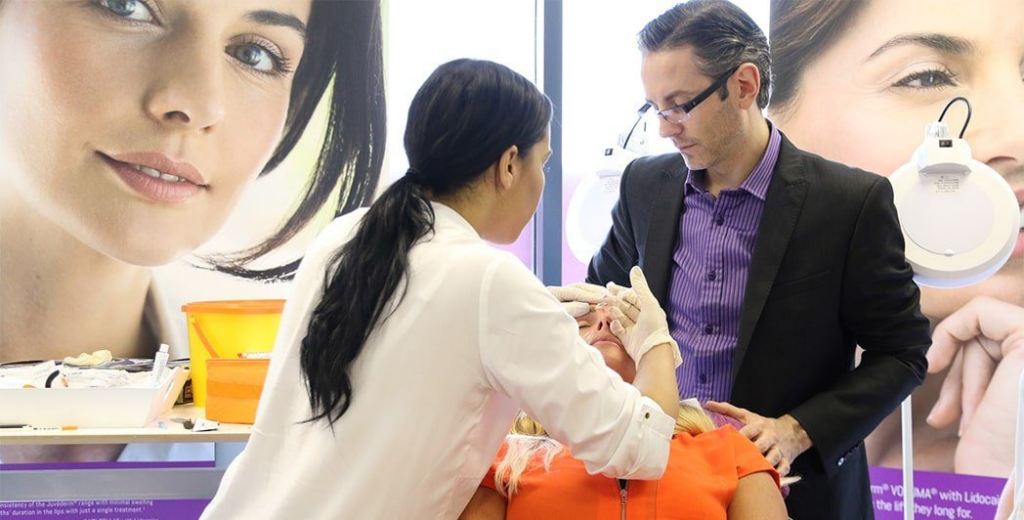Botox, short for botulinum toxin, has long been a cornerstone in cosmetic procedures for its ability to reduce wrinkles and fine lines.
Since its approval for cosmetic use in the late 20th century, Botox has become synonymous with youthful rejuvenation. However, as with any medical procedure, there have been ongoing concerns about its safety and precision.
In recent years, significant advancements have been made to address these issues, making Botox treatments safer, more precise, and ultimately more effective. This article explores these modern improvements and their impact on the cosmetic industry.
Advanced Injection Techniques

One of the most notable advancements in Botox treatments is the development of advanced injection techniques.
Traditional Botox injections involved administering the toxin in larger quantities, which could sometimes lead to a “frozen” look or unwanted muscle weakness. Today, techniques such as micro-botox and diluted injections have revolutionized the approach to treatment.
Micro-Botox, also known as “Baby Botox,” involves injecting smaller amounts of the toxin into the superficial layers of the skin.
This method allows for more precise targeting of fine lines and wrinkles without affecting the deeper muscles.
As a result, patients can achieve a more natural and subtle enhancement, avoiding the overly smooth or expressionless appearance that sometimes accompanies traditional Botox treatments.
Diluted Botox injections, where the toxin is mixed with a saline solution, have also improved precision. This technique allows practitioners to administer the toxin more controlled, ensuring even distribution and reducing the risk of complications.
These refined methods have made Botox treatments more customizable, enabling practitioners to tailor the procedure to each patient’s unique needs and desired outcomes.
Safety Enhancements
Ensuring the safety of Botox treatments has always been a priority, and recent innovations have significantly enhanced this aspect. One such innovation is the use of ultrasound-guided injections.
Ultrasound technology allows practitioners to visualize the underlying structures of the skin and muscles in real-time.
By providing a clear view of the injection site, ultrasound guidance helps avoid accidental injection into unintended areas, minimizing the risk of complications such as muscle weakness or asymmetry.
Another exciting development is the advent of robotic-assisted Botox procedures. While still in its early stages, robotic technology promises to bring a new level of precision and consistency to Botox injections.
Robots equipped with advanced imaging systems and precise control mechanisms can perform injections with unparalleled accuracy, reducing the margin for human error. This technological leap enhances safety and ensures more consistent and predictable results for patients.
Expert Training and Certification

The skill and expertise of the practitioner play a crucial role in the safety and effectiveness of Botox treatments.
Recognizing this, there has been a significant emphasis on advanced training and certification for cosmetic practitioners. Many professional organizations now offer specialized training programs that focus on the latest techniques and safety protocols.
These programs provide practitioners with in-depth knowledge of facial anatomy, injection techniques, and patient assessment.
These training initiatives have raised the standard of care in the cosmetic industry by equipping practitioners with the skills needed to perform Botox injections safely and effectively.
Patients can now have greater confidence in the qualifications of their practitioners, knowing that they have undergone rigorous training and certification.
Navigating the Process of Safety in Botox
The advancements in Botox treatments over the past few years have revolutionized the field of cosmetic healthcare.
New techniques such as micro-botox and diluted injections have improved precision and customization, allowing for more natural and subtle results.
Safety enhancements, including ultrasound-guided injections and robotic-assisted procedures, have significantly reduced the risk of complications and ensured more consistent outcomes.
Additionally, the emphasis on advanced training and certification for practitioners has raised the standard of care, providing patients with greater confidence in their treatments.
These improvements have not only enhanced Botox’s safety and effectiveness but also made the treatment more accessible to a broader range of patients.
As technology continues to evolve, we can expect further innovations that will refine and improve Botox treatments.
Ultimately, these advancements are empowering individuals to achieve their desired aesthetic goals with greater safety, precision, and confidence. Botox has come a long way, and its future looks brighter.

Jean Smith is a fitness enthusiast and blogger who focuses on fitness and a healthy lifestyle. She is passionate about assisting people in living healthier lifestyles and is constantly on the lookout for new and creative methods to stay fit and healthy. Her articles are excellent resources for anyone interested in improving their health and fitness.
